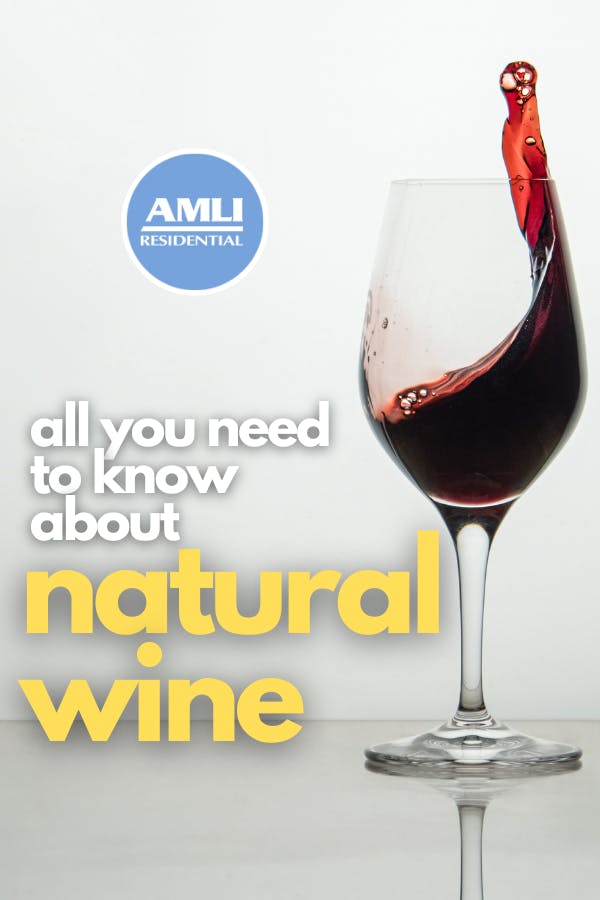Where does your wine come from? And what do you know about the ingredients that go into it?
As with any kind of drink, food or product, knowing where it comes from and how it’s made can make a big difference in terms of how consumers see its quality and desirability. Many consumers, for example, prefer coffee sourced from single-origin farms, while some may prefer a blend from all over. The same goes for wine, which has seemingly endless sources, production systems, flavors and techniques. None are necessarily better than the other, but it's precisely because they are all different that they are so special and unique to the consumer.
If you’re a fan of learning about different kinds of wine and how they’re made, then chances are that you’ve heard at least a little about natural wine and its growing popularity. You may even find a few bottles of natural wine in your local wine and bottle store, though the selection may still be sparse.
Here’s all you need to know about natural wine and what makes it so different!
All you need to know about natural wine
What is natural wine?
Though the term “natural wine” is less than a decade old, the concept behind natural wine is as old as wine itself.
Old, as in, it’s the type of wine that humans first started making thousands of years ago, making it not just a well established wine-making process, but it is the wine-making process! Studies and archaeological discoveries have found that this kind of wine was being made as far back as 8,000 years ago in the ancient city of Tbilisi, Georgia, so it’s certainly not a new trend!
At its simplest, natural wine is the traditional way of making wine using nothing but grape juice. Wine nowadays has a host of additives and extracts that have come about as the wine industry changed, just as wine processing and production techniques changed as technology evolved. Natural wine, as it’s been termed, is how the earliest kinds of wine were made, and viticulturists are starting to bring that simple, tried-and-true technique back into today’s wine culture.
Though there are no federal regulations on natural wine here in the United States (yet), there are a few agreed-upon standards that a wine must meet to be classified as “natural.”
- The grapes come from independent producers and small vineyards
- There is no added yeast
- There are no flavor additives
- There are lower levels of sulphites, or none at all
- The grapes are organic or biodynamic
Other common terms for natural wines are organic wines or biodynamic wine, so keep an eye out for those terms, too.
How is natural wine made?
Conventional wines are made by cruising and pressing clean grapes, then either keeping the skins or tossing them out to make either red or white wine, respectively. Winemakers then add yeast to the grapes to help the fermentation process which, ultimately, determines the wine’s alcohol levels, bitterness and acidity.
Once fermented, the wine goes through a clarification process that clears out impurities and removes debris. The wine is then aged with various extracts and techniques (which add flavor) and, finally, bottled and labeled.
Natural wine follows much of the same process, but vastly simplified.
To start, the grapes that are grown for winemaking are free of pesticides and herbicides and, most often, are handpicked rather than machine-picked. From there, the grapes are still crushed and pressed, though no additional yeast is added to aid in the fermentation process. The grapes’ natural sugars do all the fermentation on their own!
Sometimes, natural winemakers will add sulfites to their wine to help balance the chemical composition of the wine and prevent the wine from spoiling too quickly. It’s a technique that’s been practiced since Ancient Rome and is the only thing preventing your gorgeous pinot noir from turning to vinegar, and natural wines still use decidedly less sulfites than your average conventional wine.
Finally, natural wines aren’t filtered or clarified before being aged, nor are any flavor extracts added. What you get at the end of the process is a bottle of wine that’s about as authentic to the real thing as you can get!
Pros and cons to natural wine
When it comes to natural wine, the gut reaction may be to assume it’s inherently better just because it’s labeled “natural.” But, as with many things, it’s not always the case. It’s always best to do your research on the wine label itself to find out exactly what that particular vineyard does to make their wine, but there are a few things you can look out for right off the bat.
Because natural wines aren’t filtered or clarified, anything that goes into the fermentation vat will end up in your glass of wine, too. This could include natural proteins or microbes which, for most people, won’t cause any problems.
The natural fermentation process does also tend to increase the amount of biogenic amines which occur in many naturally fermented foods (cheese, kombucha, black tea, etc.). These can cause issues with people who have low antihistamine levels and are susceptible to headaches and migraines, so keep that in mind when you shop for natural wine.
Finally, because natural wine has very little to no sulphites to preserve them and balance their chemical structure, the shelf life of these wines is much, much lower than your average conventional wine.
How to enjoy natural wine
Keep natural wines in a cool, dry place below 80 degrees Fahrenheit and far, far away from any light source to prevent the fermentation process from activating again. Drink the wine within a year or so before it spoils, and store any opened wines in the fridge with a tightly sealed cork.
Cheers!
Pin it!

Featured photo courtesy Pixabay/jplenio


 View All Posts by Colleen Ford
View All Posts by Colleen Ford